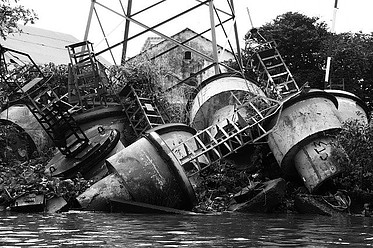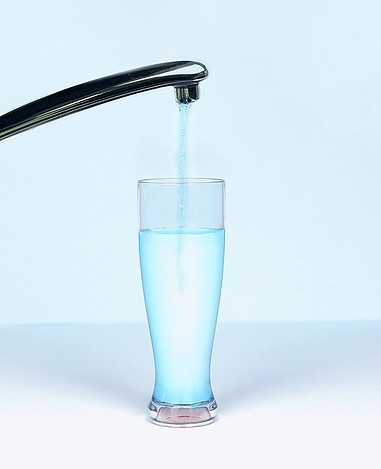Have you ever wondered how to purify tap water at home? Are you aware of what kind of water you drink at home and how it can affect your health and body and the health of your family? It is proven that drinking water in different parts of the world is of varying quality and that it is not tasty and healthy everywhere. There are also many old and unhealthy water pipes, the use of chlorine for disinfection, wild dumps, gravel pits, and fertilization and spraying of agricultural land, all of which can cause unclean water.
Unclean Water and How to Purify Tap Water at Home
Drinking water problems are divided into:
- microbiological (presence of bacteria, viruses, parasites),
- organoleptic (odor, color, taste),
- chemical (the content of fluoride, nitrates, pesticides, chlorine, metals, etc.),
- mechanical (sand, rust, mud content) and
- water hardness problem.
With expert analysis or with the help of drinking water monitoring data available from your waterworks manager, you can determine what substances the water in your area contains. Using the term integrity does not mean that the water you drink is clean. It only means that the measurements show that the concentration of the substance in the water is below the state limit. So your water may contain chemicals such as nitrates, pesticides, and similar additives. It is also worth noting that these boundaries change over the years and get higher and higher, which means that we are getting more and more chemicals. Good knowledge of your water, however, will ensure its proper purification. But it’s also essential to know how to purify tap water at home.
Hard Water
Households are also often faced with hard water, which is the total of all calcium and magnesium compounds. Hardness is most commonly measured in German hardness degrees (° N), with one German degree representing 10 mg CaO per liter of water. Most tap water has a hardness of between 8 and 12 ° N, some even higher, which means medium hard water to hard water. Tap water can contain minerals such as calcium, iron, and magnesium, which are usually in carbonate form. Due to changes in the velocity, direction, pressure, and temperature of the water, calcites are combined and eliminated on the heaters, taps, valves, pipes, or the cookware and kitchen sink.
Regardless of the mineral content, the water may also contain chlorine used for disinfection. Although chlorination is not suitable for human health, it can primarily prevent the microbiological contamination of water and the spread of various diseases. Still, some are justifiably concerned about the effects that chlorination of water can have on human health.
In this video, you can see some examples of water filters that are possibly made by yourself.
How to Purify Tap Water at Home?
Water quality and hardness can be improved with water filters. In the fight against limescale, filter or softener filters are used, which operate on the principle of permanent magnets, which protect the water supply system and appliances naturally and harmlessly. However, to clean the water of various chemical, microbiological, and other harmful substances, filters that are installed under or on the kitchen counter are used. In any case, it is necessary to carry out a water analysis before the selected type of filtration, and only then will experts be able to advise you on what type of filter to choose according to the quality of your water. Misuse of filters purchased from department stores and ignorance of buyers and sellers can cause even more significant problems than poor quality water.
Water Filters
Water filters are essential because they are able to purify tap water at home obtained from a public water supply system. This water is polluted just as much as the polluted environment in which we live. In practice, combinations of activated carbon filters, which, due to their vast surface area, absorb mainly organic compounds, and mechanical filters with a density of 0.2 – 20 microns and so-called HF membranes, with a filtration capacity of up to 0.02 microns, which successfully retain almost all bacteria. Also, filters with KDF55 medium (pure copper and zinc), and mixtures of colloidal silver prevent the development of bacteria in the filter itself. Where the potential for microbial contamination is more significant (own catchments, dripstones, old aqueducts, etc.), ultraviolet sterilizers play their role. In this case, the chemical contaminants (pesticides, herbicides, nitrates, atrazine, etc.) are effectively removed by HF filters, reverse osmosis membranes or ion exchangers. A special chapter is the so-called ionized or living water (negative ORP oxidation-reduction potential) alkaline / basic water (pH> 7.5), which, in addition to being purified, is also an active health substance. Such devices are recognized abroad (in Japan, Korea, and Russia…)as medical devices.
In the case of hard water and limescale, it can be effectively defended by the use of special paramagnetic magnets to remove limescale or its consequences. Because crystals of limescale are transformed and do not coalesce and dispose of but pass on after passing through a strong magnetic field.
Living Water and Its Healing Properties
As mentioned earlier, the water coming out of the tap is only seemingly healthy. Therefore, living water, or water that is free from all dirt and chemical poisons, is becoming increasingly popular. Such water has an indicator of hydrogen content below 28, which is the limit value. Above this level, water has a higher oxygen content, which means more oxidation. Below that value, it has more hydrogen, which causes the body to regenerate, since water is more easily absorbed through cell membranes and helps to process energy in the cell. Also, such water is neutral acidity, which means that it lowers the acidity in our body and maintains the neutral pH of our body, which has a value of 7. Such water can be obtained with a water ionizer that can convert ordinary drinking water into an antioxidant. This produces living water as it is in living organisms. In its properties, it differs significantly from the waters in our streams, rivers, lakes, and seas. The inlet water is first purified in a high-quality filter in the ionizer and separated into acidic and basic water in the electrolytic filter. Acidic water, which is a by-product of water ionization, can be used as an excellent natural disinfectant for cleaning, hygiene, food preservation, oral hygiene, facial, skin, and hair care(sprayed) or cast. Base water, however, is a powerful antioxidant and destroys free radicals. Some positive effects of ionized water on health:
- detoxifies the body,
- helps or can inhibit osteoporosis,
- lowers blood sugar,
- helps with digestive disorders and cleanses the digestive tract,
- alleviates cardiovascular problems,
- helps with dermatological problems,
- regulates blood pressure etc.
Water Filter Assembly and Maintenance
The water filter is selected based on the particle size that we want to remove from the water. It can also be chosen depending on the content of the undesirable chemical substances in the water. The filter can be installed at the point of entry into the facility, usually behind a water meter, and remove mechanical particles, scale and chlorine, and organic compounds, protecting the fixtures, appliances, faucets, and showers. It can also be mounted at the point of use. Usually below the sink, and solves microbiological, chemical, and organoleptic problems, acidity or alkalinity of water (change in water pH), and oxidation-reduction potential of ORP (from + 350mV to -350mV). In this case, it protects human health from nitrates, nitrites, chlorine, pesticides, bacteria, etc. If you choose a water filter, you need to be aware that its long and proper operation requires regular maintenance, which translates into $ 20 to $ 100 in additional costs. In multi-dwelling buildings, the cost per dwelling may be lower if the residents gather enough support votes for a common solution on the filtering. Where this is not the case, individual residents address the problem individually. In any case, consult with experts, as only they will be able to recommend the most optimal solution for your healthier water.